Living and learning – Identity
Our Living and Learning theme this half-term is Identity. Pupils will learn about what makes themselves and others special, valuing the similarities and differences between themselves and others and what is meant by community. This will be taught through our Living and Learning sessions and also a focused week – Anti-bullying week (12 November).
Also this half term, our new school charity will be chosen. Every year, we nominate a new charity to support. This year, we have been supporting MakeAWish. We decide this on the basis of a Talk Time homework, and then school councillors make the final decision.
Our Living and Learning long term plan details the learning for each year group across the year and you can keep up to date with our weekly Living and Learning statements on the parent noticeboard in the playground and also on the school calendar. We will begin and end this half term with a focus on manners.
I apologise when I need to.
I say please and thank you.
Archemedes and the Vicious Vikings
The next stop on our travels through time has been the Viking Ages. Year 4 have looked closely at the boats used by these fearsome warriors.
“The boats needed to be strong to carry so many men,” stated Sami.
“Why did they come across the seas?” enquired Jessica.
Following some research the children found out some very interesting facts about the boats.

Though Viking boats came in many shapes and sizes, the most iconic and effective Viking vessel was undoubtedly the long ship. Long, narrow and flat, long ships were fast, durable and capable of navigating both choppy seas and shallow rivers. They were also light enough to be carried over land.
Then, came the question, “How do boats float?”
We discussed that boats, canoes, ships, kayaks, and rafts all have one thing in common- they are used for transport on seas and rivers, because they float.
It’s easy to figure out that if they are made out of wood they will float, because wood floats in water. However, when you see a huge cargo ship or a cruise-liner that looks like a floating building on the water, you can’t help but wonder why this massive chunk of metal doesn’t sink.
Due to the curiosity of the children wanting to find out more about floating, our lesson took a slight scientific diversion.
Using just a bowl of water, some weighing scales and Blu Tac, I gave the children a question.
“If two objects have the same mass, will they both float?”
The class used some prior knowledge and were able to make great scientific predictions.
“No, they will both sink because the objects are the same weight.”
“It depends on the shape of the object”.
“I think the air in the object will make a difference.”
“I predict that one will float. If the objects are different shapes then it depends how much water will be pushed away.” An excellent prediction from Harris!
“The heavier it is the more it will sink.”
“I remember learning about a man called Archimedes who sat in a bath and shouted Eureka! I think that was something about floating.”
This interesting fact then left the children inquisitive to know more about the man taking a bath.! Together, we found out about this great mathematician and why he became famous just for sitting in the bath!
The Archimedes’ Principle
A long time ago in ancient Greece, a mathematician named Archimedes was taking a bath. When he got in, a certain amount of water got displaced and overflowed over the rim of the tub. Why?
Archimedes figured out that if the weight of the object being placed in the water is less that the weight of the water displaced, the object will float. This is known as buoyancy or the Archimedes’ Principle.
 Following this new piece of scientific information it was time to get back to our experiment.
Following this new piece of scientific information it was time to get back to our experiment.
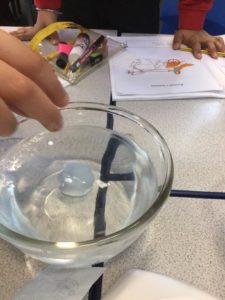
“If two objects have the same mass, will they both float?”
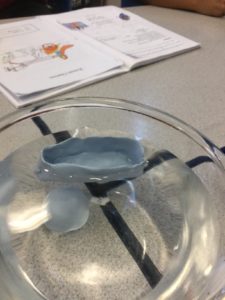
The solid ball of Blu Tac sank straight to the bottom. The Blu Tac shaped like a boat floated.
“Why?” I questioned the children.
“It is because the weight of the Blu Tac has been spread out across a bigger area.” stated Felix.
“The boat isn’t heavy enough to push the water out of the way.” said Albie.
I was so impressed with the questions asked by the children and by how inquisitive they were. Despite not starting off as a Science lesson, it was important to follow the children’s curiosities and this led them to further investigations, improved understanding and deepening scientific enquiry skills.
Well done Year 4!
Bonfire night themed menu
When we return to school, on Monday 05 November, there will be a bonfire night themed menu.

Champion chariots
This week, Year 4 have completed their Roman chariots. The final thing left to do was to test the chariots against the agreed design criteria. The children have worked very hard to make their product functional, appealing and fit for purpose
Design Criteria
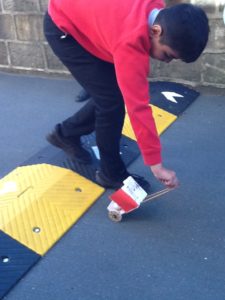
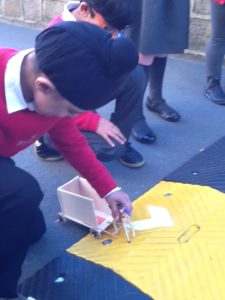

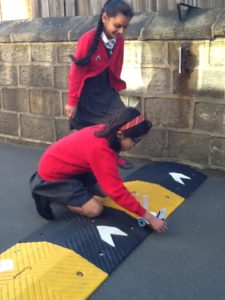
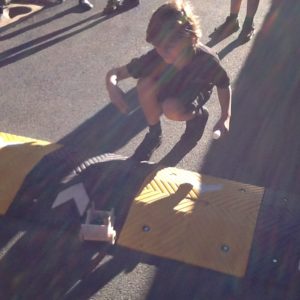

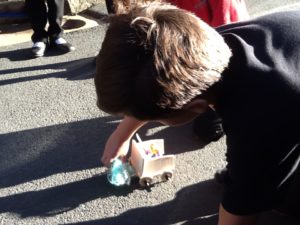

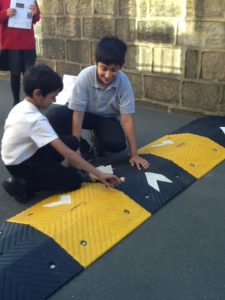
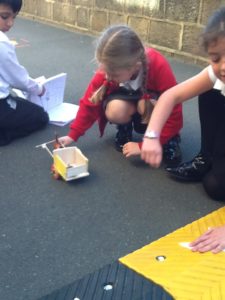

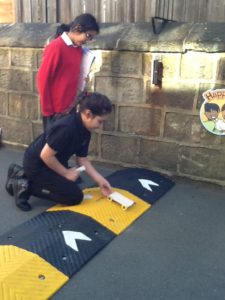
Election ready
The polling station is all set up and ready for the annual School Council elections tomorrow.
Good luck to all candidates.


Active travel in October – week three winner
Well done to our week three winner who made active journeys to school every day last week.
Our active travel section on the website has recently been updated. Have a look at some of the initiatives we take part in to encourage a happy and healthy start to the school day.

Active travel in October – week two winner
Well done to our week two active travel winner (08 – 12 October) who was randomly selected to receive the latest £10 voucher.

Our week three winner will be announced early next week.
We have a final weekly prize to award and also a prize for someone who has made an active journey to school every day in October. These prizes will be awarded straight after half term once our Living Streets travel tracker data is available.
Remember an active journey can be walking, biking, scooting or parking away from the school gate and striding the last part of the journey.
On your marks, get set, bake!
Today, Year 4 got into the ‘Bake Off‘ spirit. The children enjoyed making healthy muffins. It was great to hear so much mathematical talk happening during our lesson. We discussed scales, fractions, amounts, cooking times, measures and much more.
Apples fresh from Mrs Pearson’s garden added a healthy, fruity twist to our muffins. Thank you, Mrs Pearson, for the ingredients and all your help.
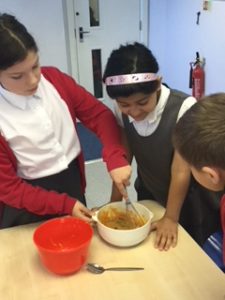
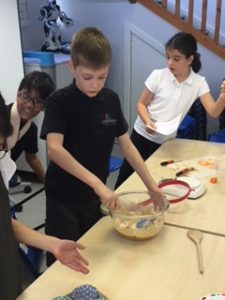
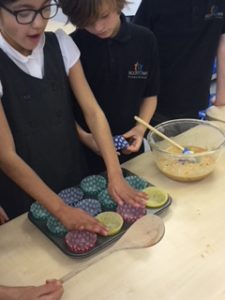
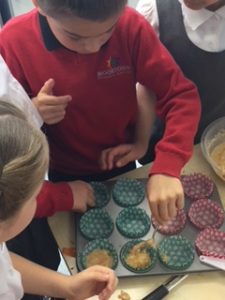
Lost property
School Council are involved in a project to try and reduce the amount of lost property we have at school.
Starting this Friday, lost property will be available to look through in the playground to hopefully reduce the pile we have already this term!
Naming your child’s items helps to get things back to their owners so we will also be offering a clothing name labelling service for 20p per item. Profits will go to our school charity, Make-a-Wish.
New additions to the library – thank you, school councillors
At their final meeting, our current school councillors spent time, using part of their budget, choosing new books for our library.

From sport books to science books, there’s a great selection. The books will soon be available to borrow from the library.










